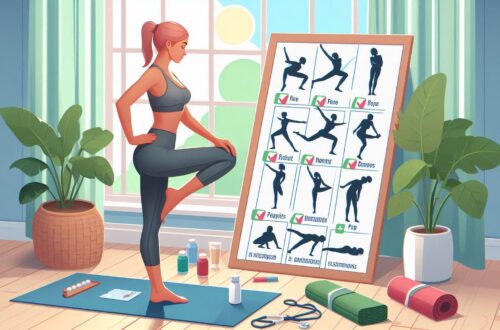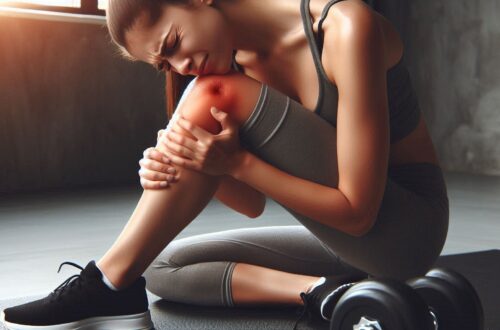Knee pain. We’ve all been there, right?
Whether it’s from an old injury flaring up or those long hours working on your feet, that lingering ache can be a real nuisance. But before you throw in the towel, it’s worth understanding what’s causing that pain and how you can tackle it head-on.
Many things can trigger knee pain. Maybe it’s the usual suspects like arthritis or tendinitis, or something more like a ligament injury. Each condition has its quirks, and getting a handle on them is the first step in finding your way to relief.
When it comes to relieving knee pain, exercise often plays a starring role. It might sound odd, especially when moving seems to make things worse. The secret lies in the type of exercises you choose. Building strength around the knee can relieve pressure on the joint, while stretching can ease tension and improve flexibility.
I can’t stress enough how important it is to know your limits. Every knee is different, and what works for one person might not for another. Pay attention to your body. If something feels off, don’t push it. The goal here is gradual, consistent improvement without overdoing it. Listening to your body will move you towards a more comfortable life.
Top Exercises for Painful Knees
Knee pain shouldn’t stop you from leading an active life. There are exercises out there that can actually ease the discomfort instead of making it worse. We’re talking about the kind of movements that build up muscle without grinding your joints into dust.
- Gentle stretching and strengthening are the way to go. Think of yoga or tai chi – they’re not just for finding your zen. These practices involve stretches that improve flexibility and can really help alleviate stiffness around the knees. Focusing on these low-impact activities doesn’t just soothe sore knees but often strengthens the entire leg.
- Squats are fantastic. Wait, before you roll your eyes, hear me out. Wall squats, where you use a wall to support your back, can be magic. They let you build strength safely and effectively, focusing the effort on thigh muscles rather than stressing the knee joint itself.
- So, what’s the best exercise for painful knees? Experts often recommend cycling, especially on a stationary bike. Think about it. You’re building up endurance without the pound of pavement hitting you back. Always remember, though, to adjust the seat and speed setting so that your knees thank you later.
- Swimming and water aerobics round up our all-star list. The buoyancy of water takes the load off your knees while the resistance works out those muscles. It’s a win-win where you feel lighter yet stronger.
Always go for those low-impact activities. They’re your best ally in the fight against knee pain.
Can Knee Pain Go Away with Exercise?
When dealing with knee pain, finding out that exercise might help it go away can be surprising for some folks. But many have seen real results from consistent, tailored workouts. The key here is to focus on strengthening the muscles around the knee, providing better support and reducing strain on the joint itself.
Take, for example, stories from people like Jean, who turned to low-impact exercises like cycling and water aerobics after years of discomfort. She found that with regular, gentle workouts, her pain significantly decreased, and her mobility improved. It highlights how important it is to find an exercise routine that suits your specific needs.
Consistency is your best friend here. Just like anything worthwhile, getting rid of knee pain with exercise is not an overnight miracle. Sticking to a routine, even when you don’t feel like it, can make all the difference in managing pain levels and overall joint health.
Keep in mind that not every exercise is right for every knee. It’s crucial to tailor your exercises based on what feels good and what doesn’t. If something hurts, change it up. Sometimes, even slight adjustments in posture or technique can alter the impact on your knees.
While exercises might not cure knee pain entirely, their role in management cannot be overstated. The more you learn about what works for your body, the better your chances of waving goodbye to that persistent ache.
Fast Relief Techniques for Knee Pain
Icing the knee is a quick go-to. I mean, what’s better than letting a cold pack reduce inflammation and numb discomfort? Just make sure to wrap it in a cloth to avoid direct contact with the skin – safety first, right?
If you’re looking for something a little more active, stretching has its benefits. Simple stretches like hamstring or calf stretches can relieve muscle tightness, which may, in turn, reduce knee pain. It’s all about keeping those muscles loose and limber.
Maybe you’re asking, how do you get rid of knee pain fast with everyday remedies? Over-the-counter pain relief like acetaminophen is often a quick fix for sudden flair ups. They aren’t a long-term solution, but they definitely come in handy when you’re in a pinch.
Of course, knowing when to seek professional help is crucial. If your knee pain is intense or persistent, getting a doctor’s advice is always a good move. It gives you peace of mind and sometimes, that’s all the relief you need.
These quick fixes can provide some welcome relief when knee pain decides to crash your party. But remember, they work best as part of a broader plan that includes regular exercise and mindful activities.
Listening to Your Body: Rest vs. Activity
- Knee pain often raises the question: should I be resting, or should I keep moving? It’s a balancing act and can sometimes feel like a tough call. The answer lies in listening to what your body is telling you.
- When pain is really bad, rest is crucial. Giving your knee a break helps reduce inflammation and prevents the injury from worsening. Sometimes, kicking back for a bit is exactly what the doctor ordered.
- But once the initial pain ebbs, gentle movements might be the ticket to getting back on track. Walking, when done smartly and without overexertion, keeps your joints from tightening up. This doesn’t mean power walking around the block! Think slow, purposeful steps.
- Experts often suggest a balance between the two: moderation is key. Light, consistent activity can aid recovery without pushing your knee beyond its comfort zone. It’s about finding that sweet spot where movement doesn’t increase pain.
- Trust yourself when determining how much rest or activity your knee needs. Your knees are pretty good at letting you know when they’ve had enough. It’s all about tuning in, being patient, and avoiding the extremes. By doing so, you give your knees a fighting chance to heal and even thrive.






